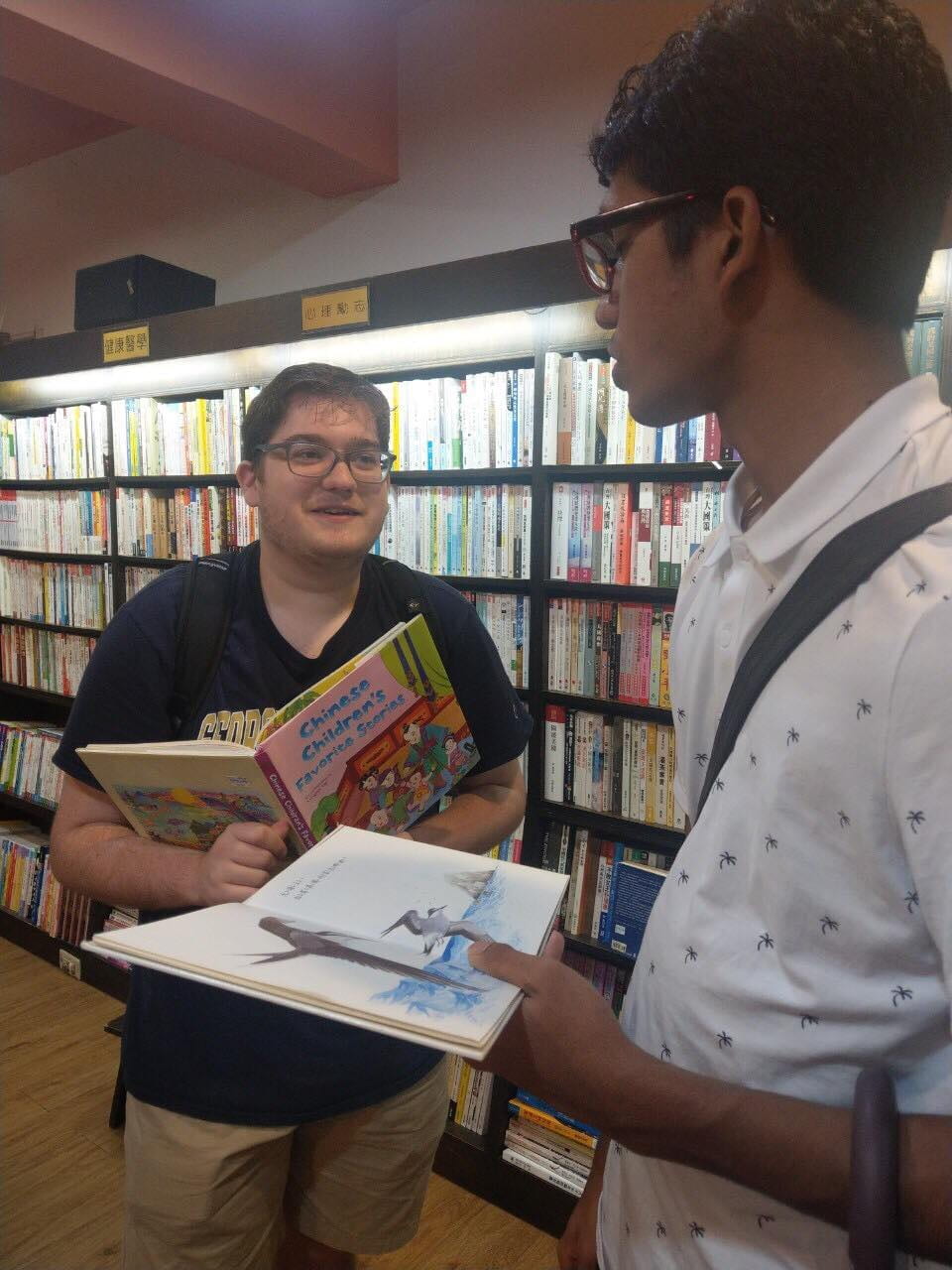Coming to Taiwan has allowed me to practice and improve my Mandarin by leaps and bounds. The immersive experience goes beyond the classroom and allows me to be learning 24/7. However, what many students do not consider is the practice of language exchange. Language Exchange involves two or more people that help each other practice languages that they are learning. This can be a great help to students on a budget as participants teach their partner their native or fluent language instead of charging money as a tutor would. I found many partners through Facebook groups as well as sites like tealit.com that focus on language exchange.
 I was very lucky to meet a few Taiwanese locals who have helped me learn and practice more than I could learn in the classroom. I was able to work on fine-tuning my pronunciation, learn about Taiwanese culture, and much more. Through meeting language partners, I was also able to explore new parts of the city and try new foods every time I met up with a language partner – I’ve made some of my best friends in Taiwan this way. One language partner in particular even went to the extent of teaching me Zhuyin (also known as Bopomofo), which is the Taiwanese equivalent of Pinyin. It’s a feat in of itself as many Taiwanese people do not know how to use pinyin. Learning Bopomofo has helped to improve my pronunciation as well as allowing me to access more resources as children’s books often use Zhuyin. Language exchange allowed me to improve my speaking speed and learn more casual expressions that younger people will more often use. It has given me the liberty to design my own plans about what I wanted to learn and dive into topics that my classes may look over, such as movies or music that were trending in Taiwan. From talking about the work of Hebe Tien to Jay Chou, I discussed song lyrics and the clever ways that artists use Mandarin. I was also able to pick up on some Taiwanese (Taiyu) and Hakka words that have infiltrated into everyday Taiwanese Mandarin conversation to better appreciate the many regional variations of Mandarin. I learned about the many views on the upcoming presidential race and the controversial KMT candidates that have been stirring heated debate among the Taiwanese public.
I was very lucky to meet a few Taiwanese locals who have helped me learn and practice more than I could learn in the classroom. I was able to work on fine-tuning my pronunciation, learn about Taiwanese culture, and much more. Through meeting language partners, I was also able to explore new parts of the city and try new foods every time I met up with a language partner – I’ve made some of my best friends in Taiwan this way. One language partner in particular even went to the extent of teaching me Zhuyin (also known as Bopomofo), which is the Taiwanese equivalent of Pinyin. It’s a feat in of itself as many Taiwanese people do not know how to use pinyin. Learning Bopomofo has helped to improve my pronunciation as well as allowing me to access more resources as children’s books often use Zhuyin. Language exchange allowed me to improve my speaking speed and learn more casual expressions that younger people will more often use. It has given me the liberty to design my own plans about what I wanted to learn and dive into topics that my classes may look over, such as movies or music that were trending in Taiwan. From talking about the work of Hebe Tien to Jay Chou, I discussed song lyrics and the clever ways that artists use Mandarin. I was also able to pick up on some Taiwanese (Taiyu) and Hakka words that have infiltrated into everyday Taiwanese Mandarin conversation to better appreciate the many regional variations of Mandarin. I learned about the many views on the upcoming presidential race and the controversial KMT candidates that have been stirring heated debate among the Taiwanese public.

It also felt great being able to help so many people learn English and achieve their goals as well. While there were some meetups that were awkward or boring, after meeting a few people I quickly found that most people looking for exchange were friendly, engaging, and offered a lot to learn from. I’ve done exchanges with fellow students, as well as people who were in their 60’s. I was able to meet and have intriguing conversations with people from different workplaces and political views. I am grateful for the opportunity to take intensive classes at National Chengchi University but also grateful to be surrounded by so many partners who help push me to the goal of fluency.


